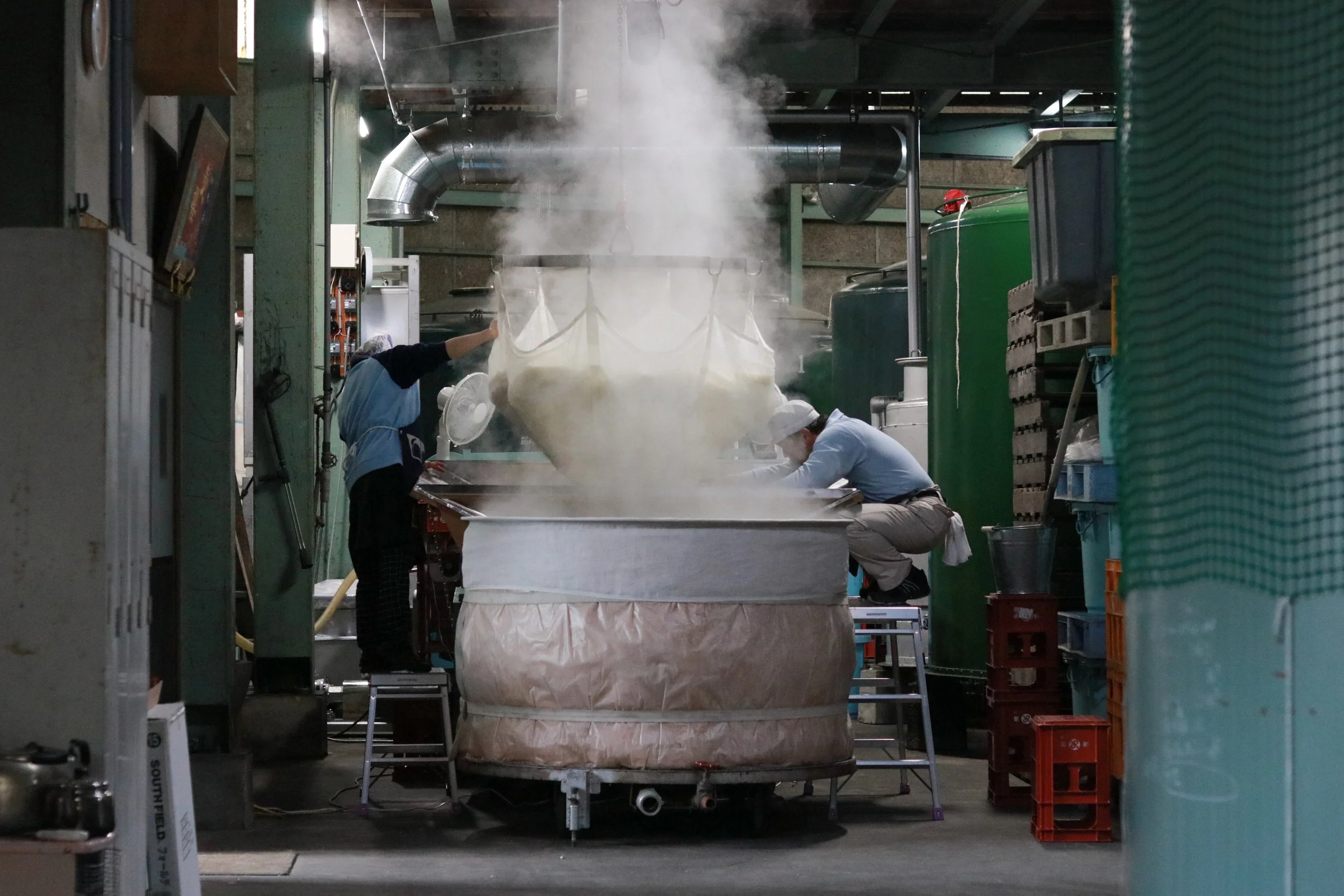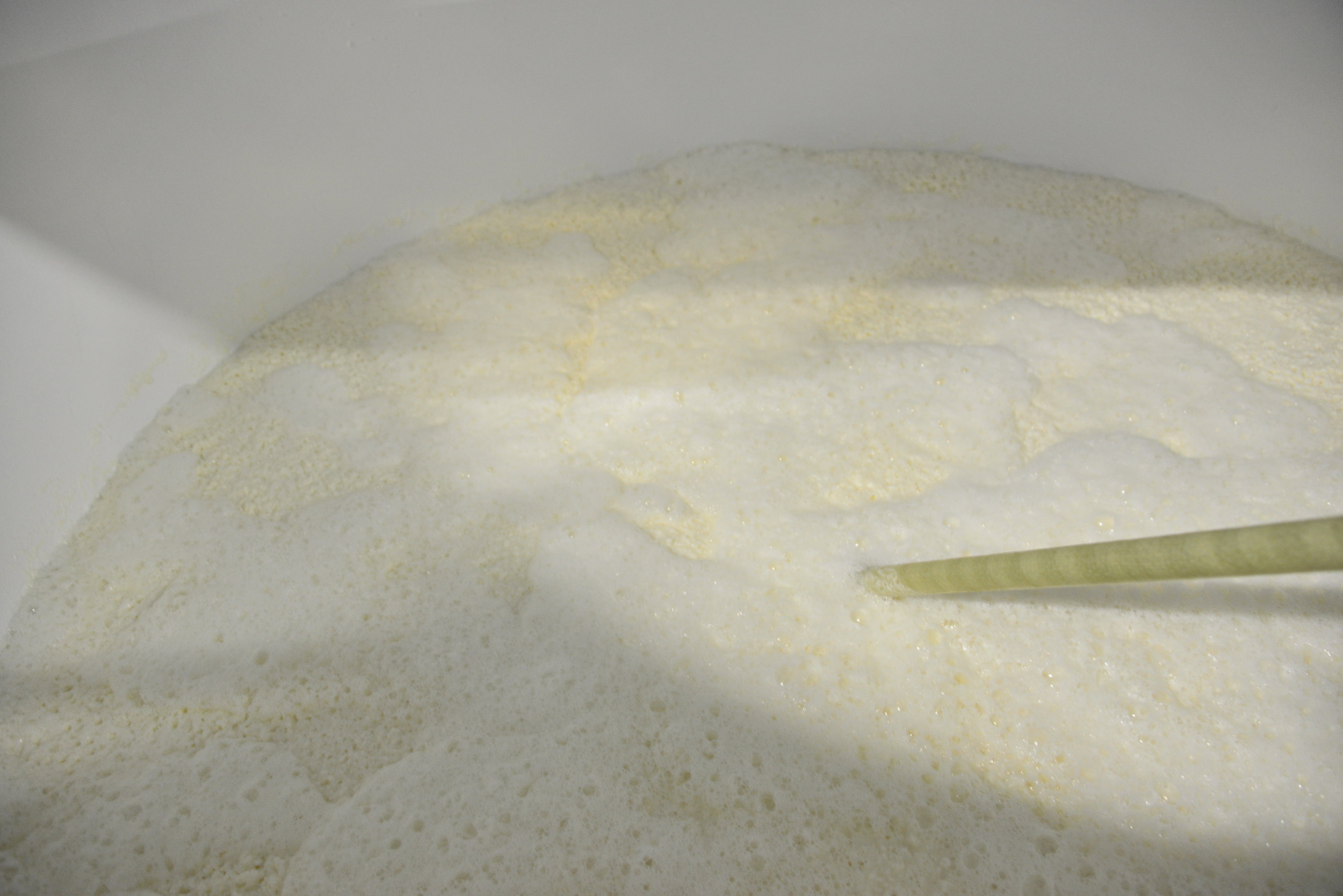What is Sake and How is it Made?
What is sake?
Put very simply, sake is a clear alcoholic beverage from Japan that is brewed from polished short-grain rice.
In Japan, Sake is more commonly called Nihonshu [日本酒] (Japanese alcohol), since the word sake just means ‘alcohol’ in Japanese and is used as a blanket term for all alcoholic beverages.
Before we look at how sake is made, let’s clear up some common misconceptions about sake.
What is it not?
Wine — Sake is often called ‘rice wine’. Wine is made by fermenting fruit, sake is brewed in a process more similar to beer brewing because the starch in the rice grains has to be converted to sugar before fermentation can take place.
Soju, Shochu — Soju is a Korean liquor, Shochu is a Japanese liquor most commonly made from grains or sweet potatoes. Both are distilled and much higher proof than sake.
fortified — While your local liquor laws might disagree, sake is not actually a fortified beverage. Some types have alcohol added, but this is not done to achieve a higher alcohol level overall.
strong — The small glasses traditionally used for serving sake lead many people to think it’s sharp and alcoholic and meant to be drunk like a shot. Most Sake has about 15–16% alcohol by volume (the legal maximum is 22%), which is just a little more than some red wines, and is usually quite delicate and mellow.
ume-shu or yuzu-shu — Some menus will list ume-shu or yuzu-shu in the same category as sake. These are actually liqueurs, made with fruit (in this case Japanese apricot (ume), or yuzu, a kind of citrus), sugar and a distilled spirit like shochu. However, sake can sometimes be used as a base instead of shochu.
How is Japanese Sake made?
Rice and Water
Hard & Soft Water
Elements like magnesium and potassium in the water act as nutrients for the enzymes that convert the rice starch into sugars, and help the yeast do its job. Harder water therefore facilitates a faster fermentation, resulting in a dry and slightly rough sake, while softer water means slower fermentation and more delicate sake.
Rice might be the first ingredient that comes to mind, but water is equally important in sake – after all it makes up roughly 80% of the finished product! Water is used at almost every step of the process, from washing and steaming at the start to the addition of water to balance the alcohol level at the end. Breweries are often located near natural springs with especially clear water with a low mineral content.
Rice grains are polished so only the starchy core remains
The rice used for sake brewing will usually come from an outside supplier and will not have been grown by the brewery itself, but close collaborations with local farmers are becoming more common. While you can make sake from regular table rice, premium sake is brewed using special rice varieties specifically developed for sake brewing. Yamada Nishiki [山田錦] is the most popular, and well-suited for making sake with fruity aromas.
As a first step, the rice is polished to remove the outer layer of the grain, which contains fats, proteins, and other elements that will negatively influence the taste, especially if your aim is to create a light and aromatic sake. In contrast, the center of a rice grain is almost pure starch. Sake-rice varieties have a distinct ‘heart’ of starch that allows higher milling ratios than regular rice.
The rice is then washed to remove any remains from milling, soaked, and finally steamed in large steamers before being spread out to cool down to about 30°C.
The higher the polishing rate, the more careful the brewery workers have to be when washing and soaking the rice, as highly polished grains can easily break and will soak up water very quickly, which in turn influences the speed of the fermentation process. For the highest grades, the soaking is timed to the second.
Koji
Part of the cooled-down steamed rice is being taken to another room to be dusted with spores of Aspergillus oryzae, also known as koji [麹]. Varieties of this fungus are also used to produce other Japanese staples such as soy sauce and miso paste.
The koji is vital to sake production because (in contrast to wine grapes) the sugar in rice is not readily available to feed the fermentation; it’s bound up as starch. Enzymes from the fungus break down the rice starch to sugar (a process called saccharification) which then serves as food for the yeast in the fermentation process.
The koji-rice has to be kept at specific temperatures and humidity to ensure optimal growth. For higher-grade sakes, constant attention and a lot of manual labour is needed to rearrange the grains in order to adjust heat and moisture. Different styles of sake require a more or less dense cover of koji on the grains, as the amount of enzymes present will influence the speed of fermentation and thus the taste.
In beer production, malting has a similar role: the starch also needs to be converted to sugar to make fermentation possible. The grains are germinated which releases an enzyme that can break down starch.
This is not possible with sake rice, as the germ is polished away at the beginning.
Yeast and Fermentation
Steamed rice, koji-rice, water and yeast are mixed to create a yeast starter, just like you do when baking bread. A brewery may use their own proprietary yeast and some even experiment with using wild yeasts, but most will buy commercial yeast, for example from the Brewing Society of Japan.
Different yeast strains have been developed to achieve specific flavour profiles in sake. If you smell any fruity aromas in your sake (banana, apple/pear, melon), these will have come from the yeast.
The yeast starter is then added to a larger tank with more steamed rice, koji-rice and water for the main fermentation. During the fermentation, more rice, koji-rice, yeast starter and water will be added, in all three times.
The brewing process for sake is unusual as two processes take place at the same time: the conversion of starch to sugar (by enzymes from the koji) and the conversion of sugar to alcohol (by the yeast). In beer brewing, for example, the yeast is added and fermentation is started only after the starch to sugar conversion has finished.
It is important to carefully control the amounts of each ingredient and the temperature of the tank so the fermentation can proceed at the right speed and produce the flavor profile the brewer wants.
And…
Why add alcohol?
What the alcohol can do is a few things: it can give the sake a cleaner finish and an overall more ‘dry’ and light taste. It will also help to bring out more aroma.
The added alcohol does not result in a higher alcohol percentage overall, as the brewer will balance out the final level by adding water later on.
Sake made without the use of distilled alcohol will be labeled as Junmai [純米]or Junmai-shu [純米酒], meaning “pure rice sake”.
When the fermentation is finished, the sake will need to be separated from the mash. Japanese Sake always has to be filtered (the legal name seishu [清酒] literally means ‘clear alcohol’), although some brewers will use a very large mesh to make a special style of sake called nigori-zake [濁酒] or ‘cloudy sake’ that retains some of the solids.
For most sake, this is done by filling the mixture from the tank in cloth bags which are then squeezed in a hydraulic press so the clear sake runs out. Premium sakes will be drained from their lees more carefully, some without mechanical pressure at all.
Sometimes, a small amount of distilled alcohol is added to the mash before pressing to extract more flavour (see side note.) What remains after the pressing is a ‘cake’ called kasu [酒粕] or ‘sake lees.’ This is not thrown away but can be used for pickling or cooking, and even in beauty products.
The sake is then further clarified, first by letting it rest so that any remaining micro particles can settle and be removed and then by filtering the sake with active charcoal to get rid of any last impurities.
The sake is then usually stored in tanks for a few months, to allow the flavours to mellow a little. Before bottling, it will also be diluted with a bit of water in order to adjust the alcohol level. The majority of sake you buy outside of Japan will also have been pasteurised, usually both before storing and before bottling. Unpasteurised sake, Nama-zake [生酒] in Japanese, will always be labelled as such and must be kept cold to avoid spoilage.
Sake brewing is a complex process and this is only a very basic introduction.
Soon we will publish a series of articles where we look at each of these steps in more detail, and explain how each phase of the brewing process can influence the final product.











